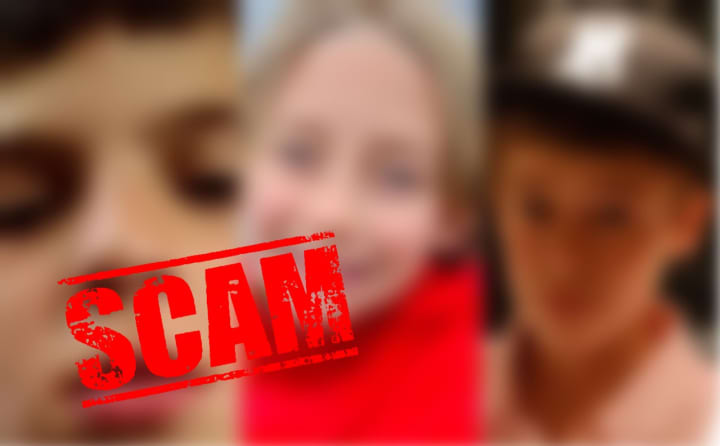For those who've seen -- or, worse, shared -- the Facebook post about a purportedly missing boy the past couple of days, here are a few questions:
Does the post include a town? A link? Contact details?
It doesn't. Because it's bogus.
Like any good phishing scam, the missing boy ploy tugs at the heartstrings and plays on the fears of those who want to help.
They're actually helping the scammers find more victims.
Phishers threw their latest line into social media waters on Thursday, Dec. 15.
Some moderators barely noticed it -- after all, it doesn't seem sinister:
"This is the most recent picture of my son Andrew Bucklandon his first day of school, he left yesterday morning for school and he never came back. He was last seen wearing black converses with purple and red shoelaces as well as a blue zip-up hoodie, he has dirty blonde hair, blue eyes and he’s about 5’4-5’5 and 124lb."
Then comes the clincher:
"Please help us find him."
Bullsh*t!
Various photos have already been used in the scam (at the top of this story), including one in which the boy is wearing a Yankees baseball cap, only the image is reversed and the NY logo is backwards.
Similar scams have included claims that a missing child has been discovered. The targets are usually buy and sell groups, yard sale groups and others whose moderators are less likely to notice.
Once the scam has been widely circulated, the real con begins:
- The message is edited;
- The photos are gone and new text appears;
- In its place is a come-on -- free money, free dental care or something else you'll end up paying for dearly and aren't going to get.
There's also a link.
DON'T CLICK IT.
Facebook editing scams aim to get users to download an app that will then install malware on your device. Next thing you know, someone's got your credit card info. They might even assume your identity.
DON'T FALL FOR IT.
If a "missing child" alert turns up in your newsfeed, take a moment to actually look at it. Is the necessary info there? Is the kid wearing a shirt with the name of a town in another region of the country?
Better yet: Has there been an Amber Alert? What parent of a truly missing child bypasses the police and goes straight to Facebook?
Here's a tip: Go to the Facebook search bar. Type in the supposed child's name and "missing." Check out how far and wide across the country -- or the world -- the post has already spread.
Or do a Google search; that can be just as entertaining.
If you're going to share something, share this story. You'll actually be doing some good.
Click here to follow Daily Voice Pascack Valley and receive free news updates.


